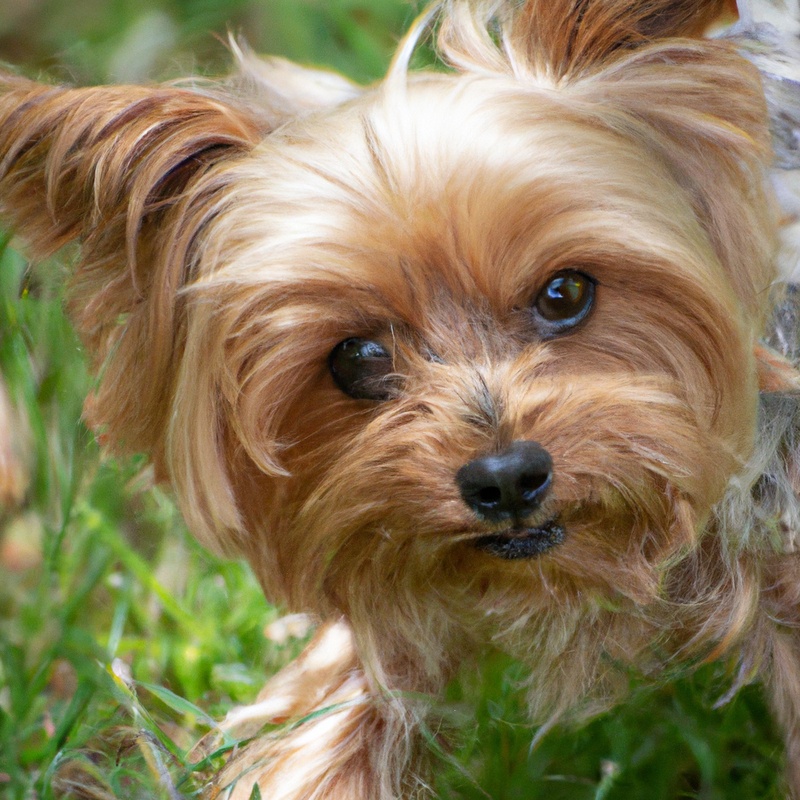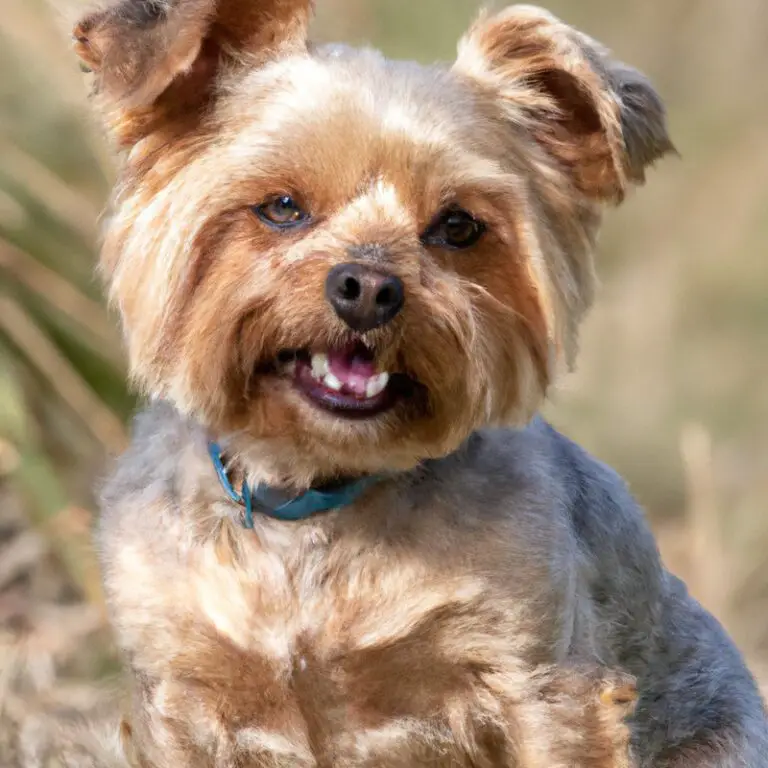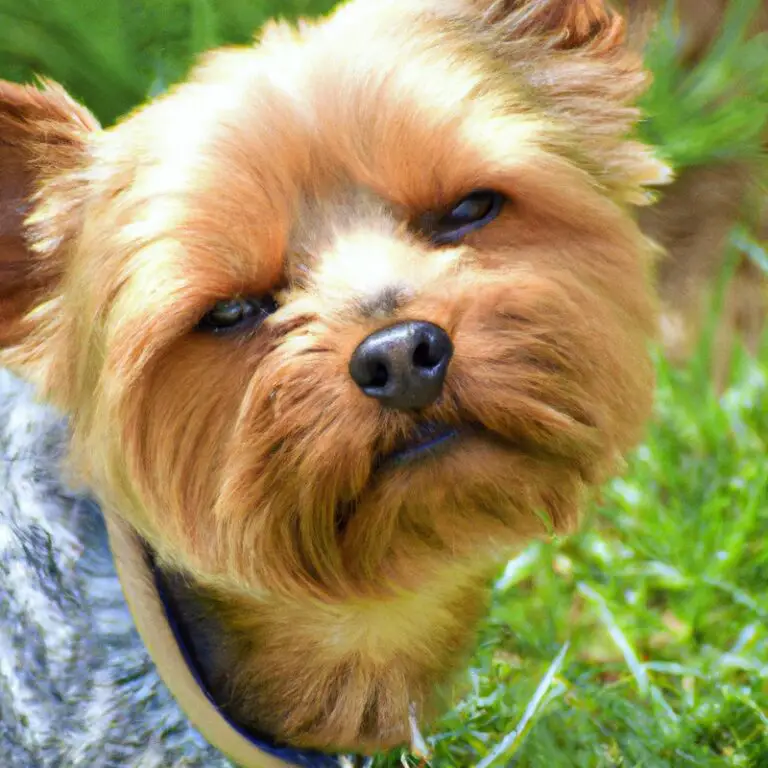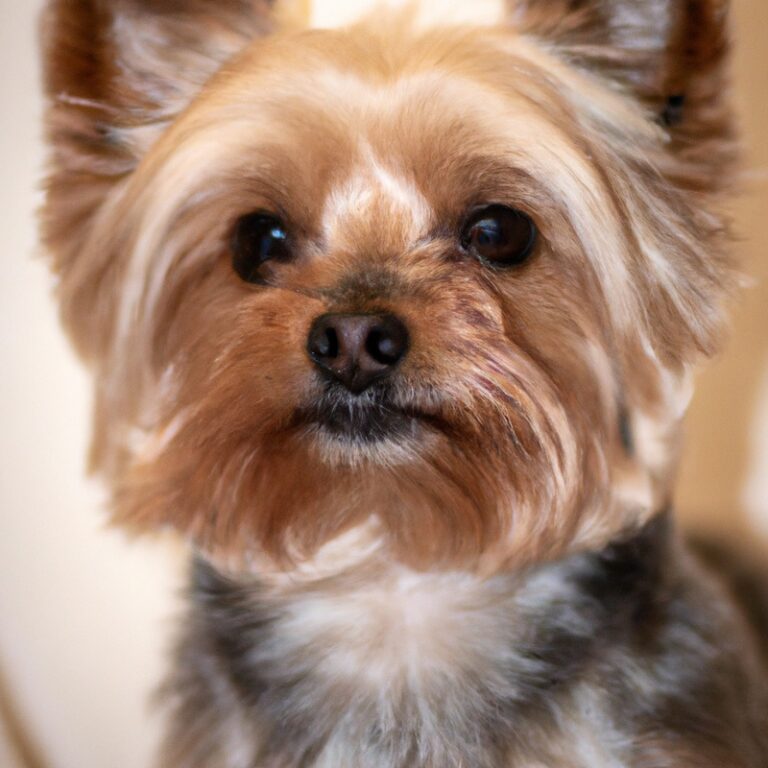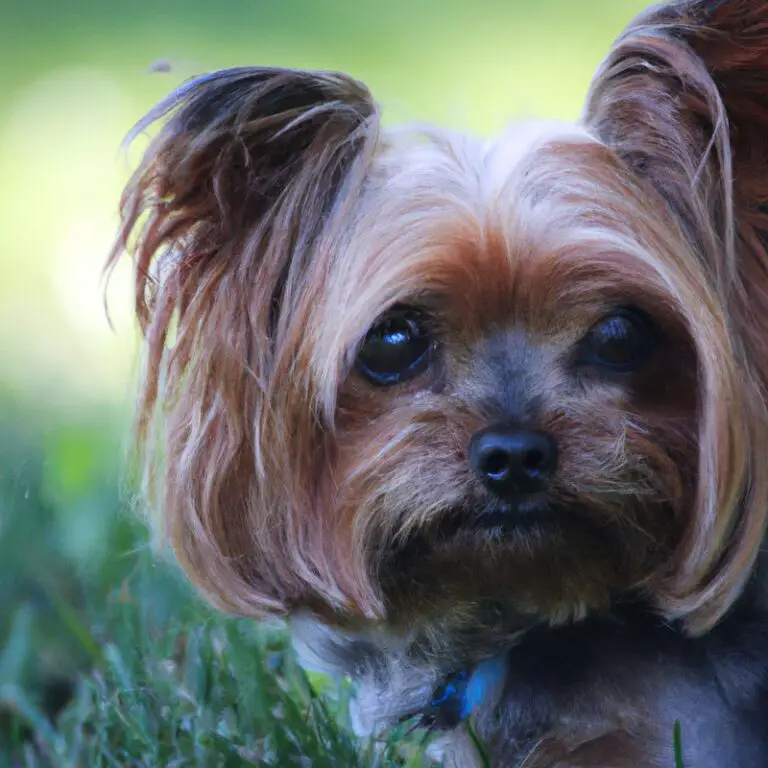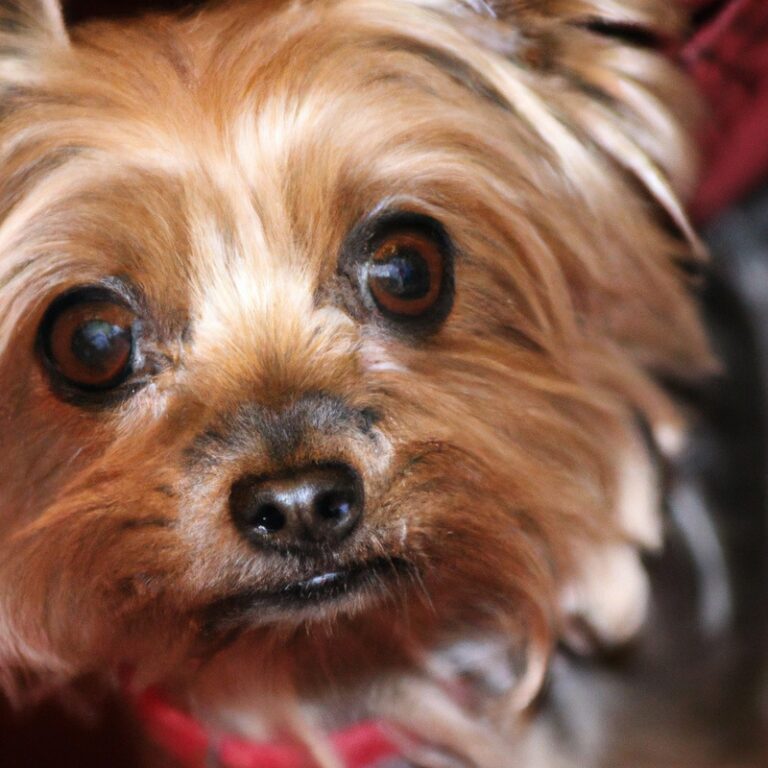How Do I Prevent My Yorkshire Terrier From Chasing Small Animals?
Key Takeaways:
- Consistent obedience training is crucial to prevent Yorkshire Terriers from chasing small animals.
- Supervision and leash control are effective strategies to prevent Yorkshire Terriers from chasing small animals.
- Providing mental and physical stimulation can help redirect a Yorkshire Terrier’s natural instinct to chase small animals.
- Seeking professional help from a dog behaviorist or trainer can provide effective methods to prevent Yorkshire Terriers from chasing small animals.
Do you ever find yourself in a heart-pounding chase, desperately trying to stop your Yorkshire Terrier from going after every squirrel, rabbit, or bird in sight? Trust me, I’ve been there.
And let me tell you, it can be quite a challenge.
But fear not! In this article, I’ll share effective strategies and techniques to prevent your furry friend from engaging in their instinctive pursuit of small animals. By understanding their instincts, setting boundaries, providing stimulation, and creating a safe environment, you can ensure your Yorkshire Terrier’s safety and the well-being of the little critters they love to chase.
So let’s dive in and learn how to keep those chasing instincts at bay!
| Prevention Tips | |
| 1. | Train your Yorkshire Terrier to obey commands such as “leave it” or “stay.” |
| 2. | Use positive reinforcement and rewards to reinforce desired behavior. |
| 3. | Keep your Yorkshire Terrier on a leash or in a securely fenced area when outside. |
| 4. | Redirect your Yorkshire Terrier’s attention with toys or treats. |
| 5. | Provide plenty of mental and physical exercise for your Yorkshire Terrier to reduce pent-up energy. |
Understanding the Instincts of Yorkshire Terriers
The natural instincts of Yorkshire Terriers
Yorkshire Terriers have a few natural instincts that come from their past as working dogs. Firstly, they have a strong prey drive, which means they are inclined to chase after small animals.
This urge to chase is deeply ingrained in their genetics and can be hard to suppress.
Secondly, Yorkies also have a protective instinct, which can make them wary of strangers and highly alert to their surroundings. Lastly, they have a natural instinct to bark, as they were originally bred as guard dogs.
This is why Yorkies often make excellent watchdogs.
The urge to chase small animals
Yorkshire Terriers have a strong urge to chase small animals. It’s an instinct deeply ingrained in their nature.
When they see a squirrel, rabbit, or even a small bird, their hunting instincts kick in, and they can’t resist the urge to chase after them.
This behavior is often difficult to control, as it’s instinctual rather than learned. It’s important to be aware of this instinct and take steps to prevent your Yorkshire Terrier from chasing small animals to ensure their safety and prevent any harm to the animals themselves.
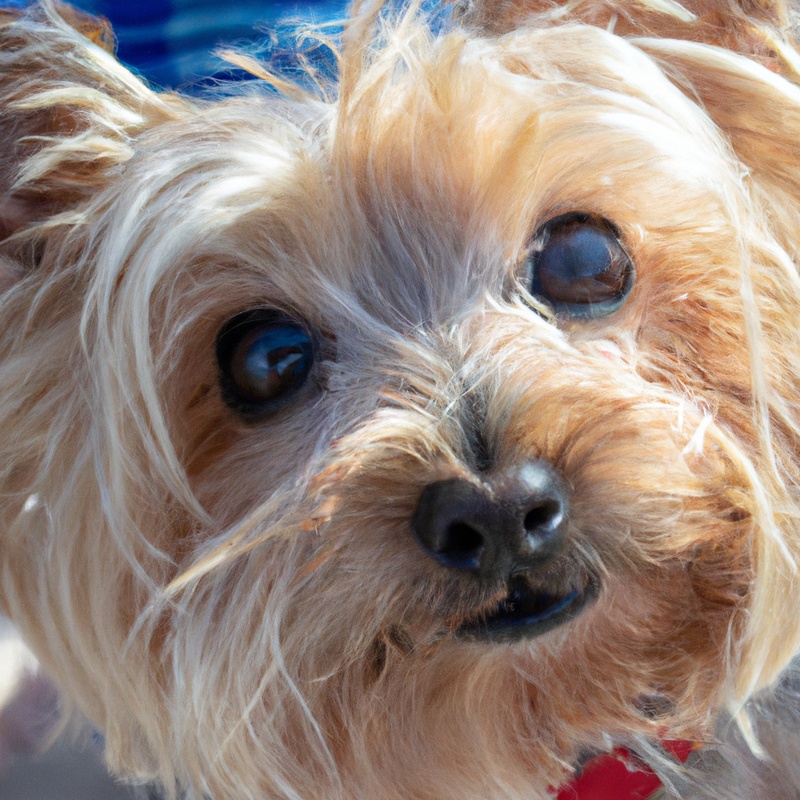
Why preventing chasing is important for their safety
Preventing chasing is important for the safety of Yorkshire Terriers because it helps to avoid potential accidents and injuries. When these little dogs chase after small animals, they can easily get themselves into dangerous situations.
They might run into traffic or wander too far from home, increasing the risk of getting lost or encountering unfamiliar and possibly aggressive animals.
By preventing chasing, we can ensure that our Yorkshire Terriers stay safe and protected.
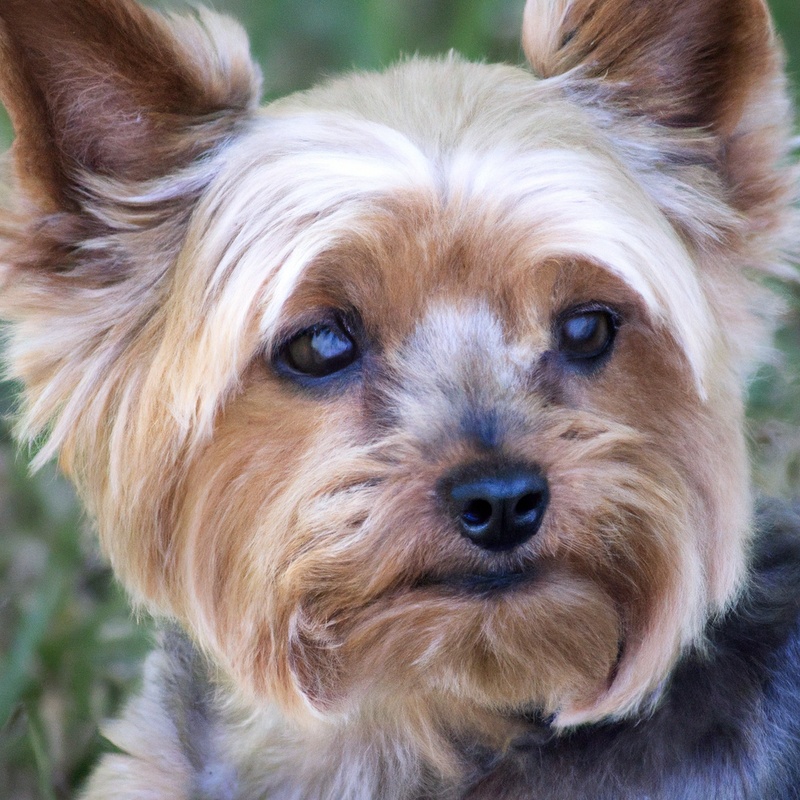
Establishing Boundaries and Training Techniques
Consistent leash training
Consistent leash training is key when it comes to preventing your Yorkshire Terrier from chasing small animals. First and foremost, make sure you have the right leash and collar for your dog.
Opt for a lightweight and comfortable leash that gives you control without causing discomfort to your pup.
Start by introducing your dog to the leash in a positive and gradual manner. Allow them to sniff and explore the leash before attaching it to their collar.
Once attached, begin walking with your dog on a short leash, keeping them close to you and maintaining control.
During walks, be alert and proactive. If your Yorkshire Terrier shows any signs of wanting to chase small animals, use a firm but gentle tug on the leash to redirect their attention back to you.
Reward them with praise and treats when they respond positively to your redirection.
Consistency is key. Make sure to consistently reinforce the training during every walk.
Remember to be patient and understanding, as it may take time for your Yorkshire Terrier to fully grasp the concept.
With consistent leash training, you can minimize the chances of your dog chasing small animals and ensure a pleasant and controlled walking experience.

Teaching the “Leave it” command
Teaching your Yorkshire Terrier the “Leave it” command is essential for preventing them from chasing small animals. The “Leave it” command teaches your dog to ignore or abandon something they are interested in, such as a squirrel or a rabbit.
Here’s how you can teach your Yorkshire Terrier this important command:
- Start with a treat: Hold a treat in your hand and let your dog sniff it. Close your hand and say “Leave it” in a firm but calm tone.
- Reward the behavior: When your dog stops trying to get the treat from your closed hand, praise and reward them with a different treat or lots of verbal praise and petting.
- Repeat and increase difficulty: Practice this exercise regularly, gradually increasing the difficulty. Start by placing the treat on the ground and covering it with your hand. When your dog hesitates or ignores the treat, praise and reward them.
- Add the command word: Once your dog understands the behavior, start using the command word “Leave it” just before they make a move towards the treat. This will help them associate the command with the action.
- Generalize the command: Practice the “Leave it” command in different scenarios, such as with different objects or in the presence of small animals. Gradually reduce the amount of reward used and rely more on praise and petting.
Remember to be patient and consistent with the training. The “Leave it” command may take some time for your Yorkshire Terrier to fully grasp, but with persistence and positive reinforcement, they will learn to resist their instinct to chase small animals.
Using positive reinforcement techniques
Using positive reinforcement techniques is an effective way to prevent your Yorkshire Terrier from chasing small animals. Instead of punishing your dog for unwanted behavior, focus on rewarding and reinforcing the behavior you want to see.
One technique you can use is clicker training.
Start by associating a clicker sound with a treat. Whenever your dog shows good behavior, such as staying calm around small animals, immediately click the clicker and reward them with a treat.
This helps your Yorkie understand what behaviors are desirable.
Another positive reinforcement technique is the “leave it” command. Teach your dog to ignore small animals by using treats.
Hold a treat in your hand and close it while saying “leave it.” When your dog stops trying to get the treat, reward them with a different treat.
Practice this command regularly, gradually adding distractions like small toys or stuffed animals, until your Yorkie can ignore them completely. Positive reinforcement also involves praise and affection.
Whenever your dog behaves well around small animals, shower them with praise, petting, and verbal affirmations.
This helps build a positive association between good behavior and your Yorkie feeling loved and rewarded.
Providing Adequate Physical and Mental Stimulation
Regular exercise to release excess energy
Regular exercise is key when it comes to preventing your Yorkshire Terrier from chasing small animals. It’s important to understand that these dogs have a lot of energy and need an outlet for it.
By providing regular exercise, you can help release the excess energy and reduce the desire to chase.
Taking your Yorkshire Terrier for daily walks, engaging in play sessions, and providing interactive toys are effective ways to keep them physically and mentally stimulated.
Engaging toys and puzzles for mental stimulation
Engaging toys and puzzles are a great way to provide mental stimulation for your Yorkshire Terrier and keep them entertained. They help to challenge their problem-solving skills and prevent boredom.
Here are some options to consider:
- Treat-dispensing toys: These toys are designed to hold small treats or kibble, which your Yorkshire Terrier can try to retrieve by rolling, pushing or solving a puzzle. This type of toy keeps them engaged and rewards them with a tasty treat.
- Puzzle toys: Puzzle toys come in various forms, such as hide-and-seek toys or interactive games. These toys require your terrier to figure out how to access hidden treats or solve a puzzle to get a reward. They provide mental stimulation and help your dog use their problem-solving abilities.
- Interactive plush toys: These toys often have squeakers, ropes, or hidden compartments, making them more engaging for your dog. They can provide hours of entertainment and stimulate your dog’s curiosity and mental agility.
- Kong toys: Kong toys are made of durable rubber and can be filled with treats or even frozen peanut butter. Your Yorkshire Terrier will have to work to get to the treats, which helps to keep them mentally engaged and entertained.
Remember to rotate the toys regularly to keep the novelty factor, and always supervise your dog while they play with any toy to ensure their safety. Providing stimulating toys and puzzles is a great way to keep your Yorkshire Terrier mentally active and prevent them from getting into mischief.
Socializing with other dogs
Socializing with other dogs is an essential aspect of preventing your Yorkshire Terrier from chasing small animals. Dogs naturally learn social cues and behaviors from interacting with other dogs.
By exposing your Yorkie to different dogs of varying sizes, ages, and personalities, you can help them develop proper social skills and reduce their desire to chase animals.
This can be done through supervised playdates, dog parks, or obedience classes. Always ensure the interactions are positive and your Yorkie feels safe.
Creating a Safe and Secure Environment
Securely fenced yard or outdoor area
A securely fenced yard or outdoor area is essential for preventing your Yorkshire Terrier from chasing small animals. The fence should be tall enough to prevent your dog from jumping over and have no gaps or spaces where your dog can squeeze through.
Consider using materials like chain-link or solid wood to ensure durability.
Regularly check the perimeter for any damages or potential escape routes. It’s also a good idea to supervise your Terrier while they’re in the yard to ensure they don’t find other ways to get through the fence.
By having a secure outdoor area, you can provide a safe environment for your Yorkshire Terrier and keep them from chasing small animals.
Supervised outdoor time
Supervised outdoor time is essential for preventing your Yorkshire Terrier from chasing small animals. It ensures that you can closely monitor your dog’s behavior and intervene if necessary.
When you take your dog outside, be sure to keep them on a leash or in a secure, fenced area.
This helps to prevent them from running off after small animals. Additionally, supervise your dog’s interactions with other animals and redirect their attention if they show signs of wanting to chase.
Stay attentive and keep your furry friend safe during outdoor playtime.
Keeping small animals away from the dog’s reach
Keeping small animals away from your Yorkshire Terrier’s reach is essential for their safety and the well-being of the animals. Here are a few ways you can prevent your dog from chasing small animals:
- Supervision is key: Always keep an eye on your Yorkshire Terrier when they are outside. This will allow you to intervene if they start chasing after any small animals.
- Secure boundaries: Make sure your backyard or outdoor area has secure fencing or barriers to prevent small animals from entering and your dog from escaping.
- Train your dog: Enroll your Yorkshire Terrier in obedience training to teach them commands like “leave it” or “stay.” This will help you control their impulses and prevent them from chasing small animals.
- Distractions and redirection: If you notice your dog showing interest in a small animal, quickly redirect their attention to something else, like a toy or treat. This will help break their focus and divert their attention away from the small animal.
Seeking Professional Help and Support
Consultation with a professional dog trainer
Consulting with a professional dog trainer is a great step to prevent your Yorkshire Terrier from chasing small animals. A dog trainer can provide you with tailored advice and guidance based on their expertise and experience.
They will assess your dog’s behavior, identify any underlying issues, and recommend specific training techniques to address the chasing behavior.
A professional dog trainer can also teach you proper handling techniques and offer ongoing support to ensure effective results. So don’t hesitate to reach out to a qualified trainer for assistance!
Joining a local dog obedience class or club
Joining a local dog obedience class or club is a great step in preventing your Yorkshire Terrier from chasing small animals. These classes are designed specifically to help dogs learn proper behavior and obedience commands.
They provide a structured environment where your Yorkshire Terrier can socialize with other dogs and receive expert guidance from trainers.
With consistent training and practice, your furry friend can learn to resist the urge to chase small animals and instead focus on following your commands. So, consider joining a local dog obedience class or club to give your Yorkshire Terrier the training and socialization they need.
Seeking advice from experienced Yorkshire Terrier owners
If you’re looking for advice on preventing your Yorkshire Terrier from chasing small animals, one great source of knowledge is experienced Yorkshire Terrier owners. These owners have likely dealt with similar challenges and can offer valuable insights and strategies based on their own experiences with their dogs.
Reach out to them through online forums, social media groups, or local dog clubs to ask for their advice and tips.
Remember to be respectful and open-minded, as every dog is unique and what works for one may not work for another. Happy learning from fellow Yorkshire Terrier enthusiasts!
Consistency and Patience in Training
Setting realistic expectations
Setting realistic expectations is key when it comes to training your Yorkshire Terrier to stop chasing small animals. First and foremost, understand that training takes time and patience.
It is not an overnight process.
By setting realistic expectations, you can avoid frustration and stay motivated throughout the training journey. Remember that every dog is different, so progress may vary.
Stay consistent and positive with your training methods, and celebrate small victories.
With time, consistency, and realistic expectations, you can help prevent your Yorkshire Terrier from chasing small animals.
Reinforcing training techniques regularly
Reinforcing training techniques regularly is key to preventing your Yorkshire Terrier from chasing small animals. Consistency is crucial in training your pup.
Make sure to practice commands, such as “leave it” or “stay,” frequently and in various environments.
Use positive reinforcement, like treats or praise, when your dog follows your commands correctly. By reinforcing these techniques regularly, your Yorkshire Terrier will learn to listen and be less inclined to chase small animals.
Keep at it, and you’ll see progress over time!
Being patient with the progress and setbacks
Being patient with the progress and setbacks is essential when training your Yorkshire Terrier to prevent them from chasing small animals. Training a dog takes time, and progress may not always be linear.
There will be moments of improvement and setbacks along the way.
It’s important to remain patient and not get discouraged. Instead of expecting instant results, understand that training is a process.
Each dog learns at their own pace, and it may take some time for your Yorkshire Terrier to fully grasp the concept of not chasing small animals.
Be prepared for setbacks, as they are a natural part of the learning process. When setbacks occur, it’s important not to get frustrated or give up.
Instead, assess what might have triggered the behavior and adjust your training approach accordingly.
Stay consistent with your commands and reinforce positive behavior. Remember to reward your Yorkshire Terrier for good behavior, as this will help motivate them to continue on the right track.
Keep in mind that dogs are individuals, and some may take longer to learn than others.
Avoid comparing your Yorkshire Terrier’s progress to other dogs or setting unrealistic expectations. Give them the time they need to understand and internalize your training efforts.
Consequences of Not Preventing Chasing Behavior
Endangering the small animals
Endangering small animals is one of the consequences of not preventing chasing behavior in Yorkshire Terriers. These small but mighty dogs have a strong prey drive and may instinctively chase after squirrels, rabbits, birds, or other small creatures they encounter.
This behavior can put the lives of these innocent animals at risk.
When Yorkshire Terriers chase small animals, they may harm or even kill them in the process. These small pets can easily catch and harm smaller animals, causing injury or even death.
Additionally, when small animals are chased, they may become frightened and run into dangerous situations, such as traffic or other hazards.
It is important to prevent this chasing behavior to ensure the safety and well-being of both your Yorkshire Terrier and the small animals it may encounter. By properly training your dog and keeping it on a leash or in a secured area, you can minimize the risk of your furry friend endangering small animals.
Risk of injuries or accidents
Risk of injuries or accidents is a significant concern when it comes to preventing Yorkshire Terriers from chasing small animals. These little dogs are filled with energy and curiosity, which can lead them to dart after squirrels, rabbits, or other critters.
Unfortunately, this behavior puts them at risk of various injuries or accidents.
One obvious risk is the dangers posed by traffic. If your Yorkshire Terrier runs into the road in pursuit of a small animal, they could easily get hit by a car.
This can result in severe injuries or even death.
In addition, chasing small animals can lead to other types of accidents. Your Yorkshire Terrier may get tangled in bushes, fences, or other obstacles while chasing the prey.
This can result in scratches, cuts, or even broken bones.
There is also a risk of the small animal turning on your dog in self-defense, leading to bites or scratches. It is crucial to prevent chasing behavior in Yorkshire Terriers to avoid these potential injuries or accidents.
By keeping them on a leash or in a securely fenced area, you can minimize the risk and ensure their safety.
Training your dog to respond to commands and providing plenty of mental and physical stimulation can also help redirect their prey drive and prevent chasing behavior.
Legal consequences and potential fines
If your Yorkshire Terrier is not prevented from chasing small animals, there could be legal consequences and potential fines. This is because allowing your dog to chase and potentially harm wildlife or pets can be considered a violation of animal control or leash laws in many areas.
The specific fines and penalties vary depending on your location, but they can range from a simple warning or citation to more serious consequences such as mandatory training programs, higher fines, or even confiscation of your pet.
That’s why it’s important to take necessary precautions and keep your Yorkshire Terrier on a leash or in a controlled environment to avoid any legal issues.
Final Verdict
Preventing Yorkshire Terriers from chasing small animals requires understanding their natural instincts and implementing effective training techniques. By establishing boundaries, providing stimulation, creating a secure environment, seeking professional help when needed, and practicing consistency and patience, owners can successfully curb this behavior.
Neglecting to address this issue can lead to dangerous consequences for the animals involved, as well as legal repercussions.
As an expert, I strongly emphasize the importance of taking proactive measures to ensure the safety and well-being of both your Yorkshire Terrier and the small animals in its vicinity.

